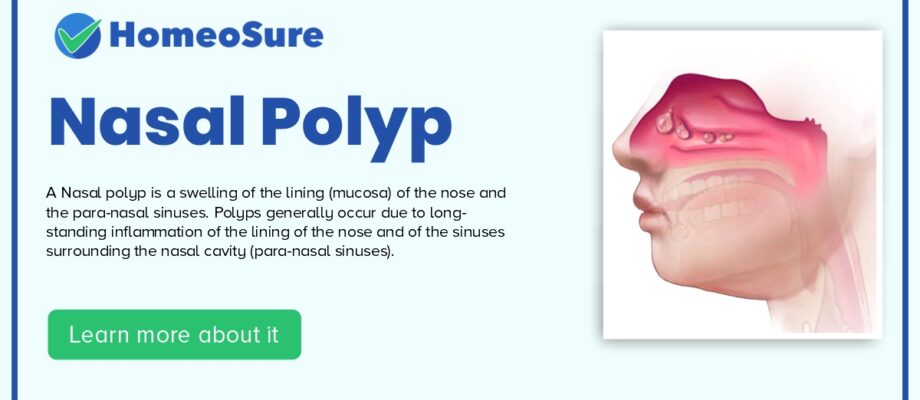Nasal Polyp
A Nasal polyp is a swelling of the lining (mucosa) of the nose and the para-nasal sinuses. Polyps generally occur due to long-standing inflammation of the lining of the nose and of the sinuses surrounding the nasal cavity (para-nasal sinuses). Nasal Polyps are felt and seen as sac-like, soft growths or fleshy swellings in the inner lining of the nose and sinuses.
CAUSES OF NASAL POLYPS
They occur as a result of a long-standing chronic inflammation as a result of Asthma, repeated Respiratory infections, Allergies, Drug sensitivity or Immune disorders.
SYMPTOMS OF NASAL POLYPS
Nasal Polyps look like small grapes deep inside the nasal cavity and can appear singly or in clusters. They are collections of inflammatory cells, fluid and tissue.
Common symptoms associated with polyps are:
- Nose-block forcing an individual to breathe through the mouth
- Runny nose and sneezing
- Reduced sense of smell and taste, etc
COMPLICATIONS
Nasal Polyps can complicate into:
- Obstructive Sleep Apnea: It is a serious disorder and is characterized by frequent breaks in the regular breathing pattern during sleep, despite the effort of breathing.
- Asthma Attacks: Continuous inflammation of the nose and sinuses could trigger Asthma in some patients.
- Sinus Infections: Some patients may become prone to repeated or long term sinus infections.
- Eye Infection: Infection may spread to the eye leading to reduced vision.
- Epistaxis: Polyps can also instigate bleeding from the nose.
HOMEOPATHIC TREATMENT
Homeopathy is strongly recommended for management of nasal polyps, especially when they are small in size. Timely administered homeopathy medicines help avoid surgery and its inherent complications. Moreover, it is very common for the condition to recur even after surgery. Homeopathy also has preventive role to offer, by which chance of recurrence is minimized.
Homeopathic treatment is targeted towards UPROOTING THE DISEASE and ensuring health with no side effects. For prescribing to an individual, a PLAN OF TREATMENT is followed which involves:
- GETTING THOROUGH UNDERSTANDING OF CASE which includes complete case taking (analyzing patient as an individual) along with patient history and family history
- DIAGNOSIS OF PATIENT AND DISEASE
- INDIVIDUAL ASSESSMENT OF THE CASE
- PRESCRIBING THE MOST SUITABLE INDIVIDUAL CONSTITUTIONAL REMEDY
